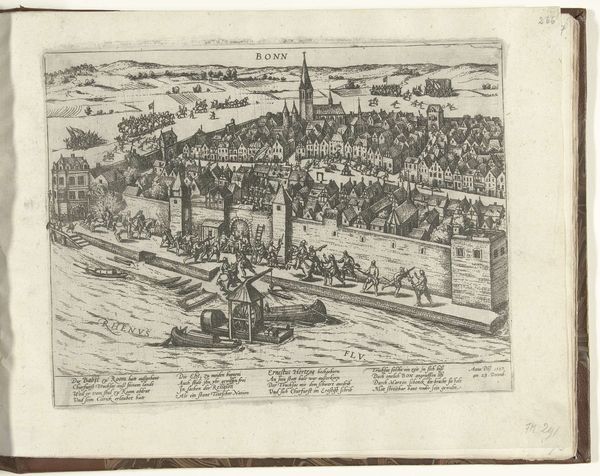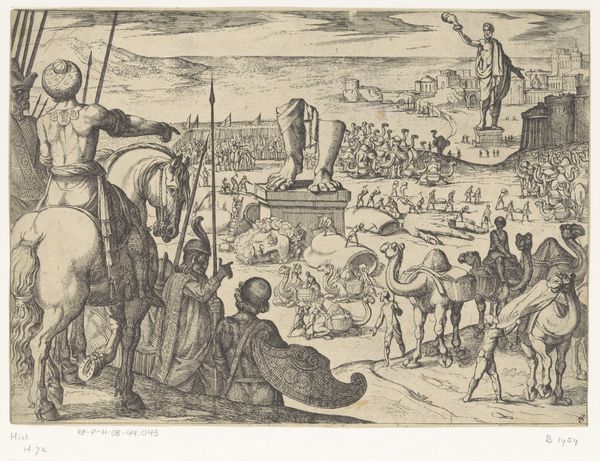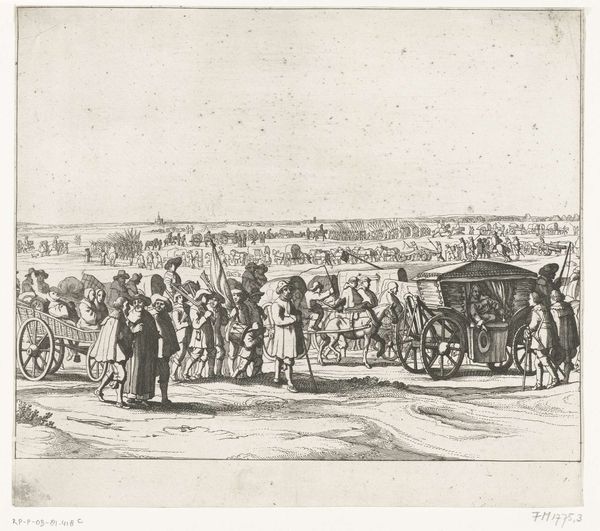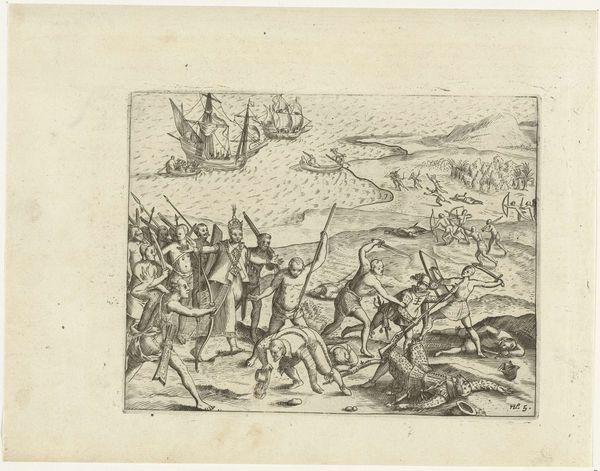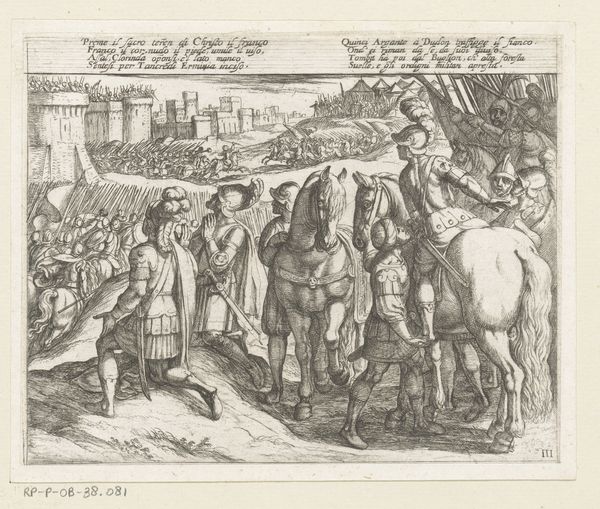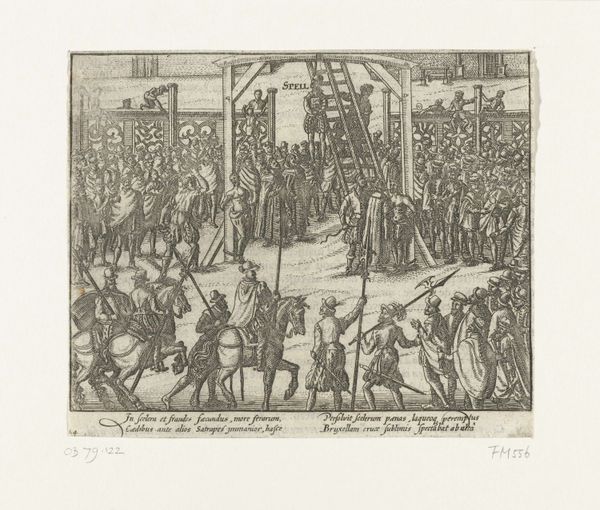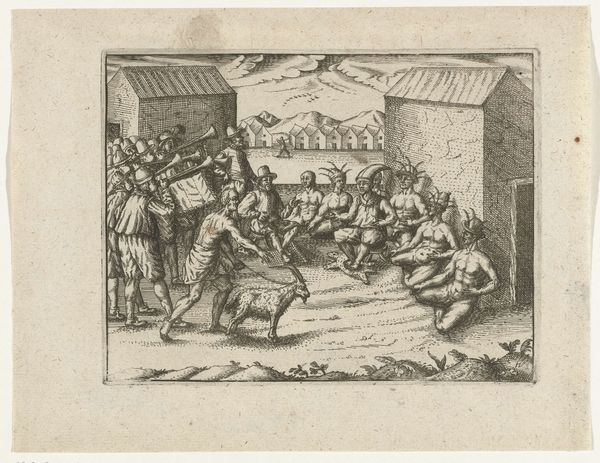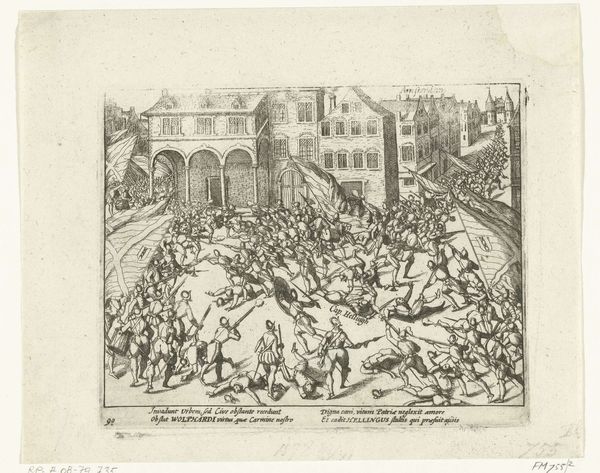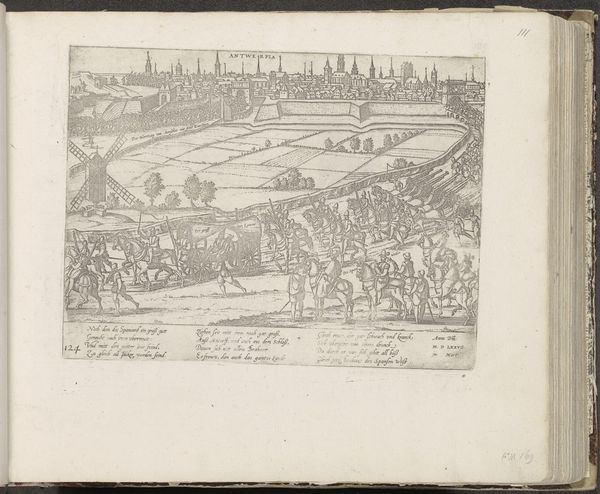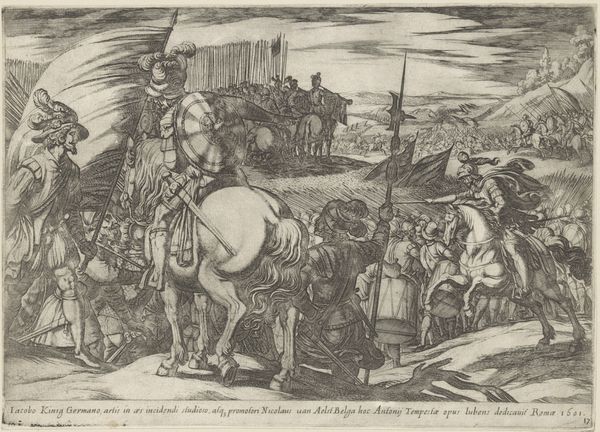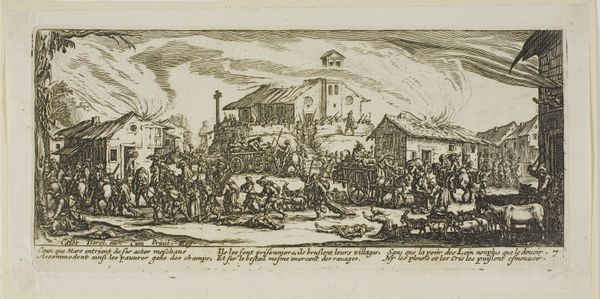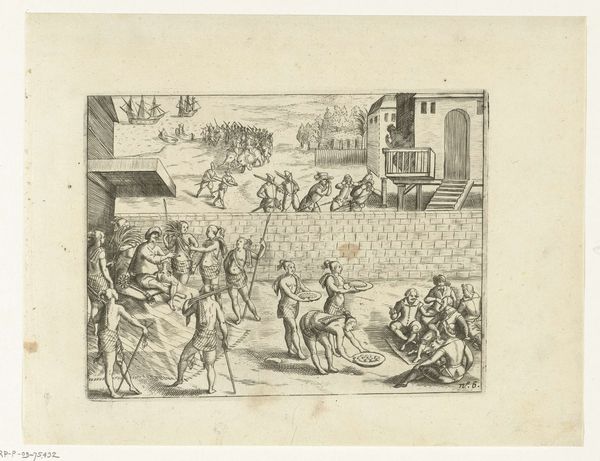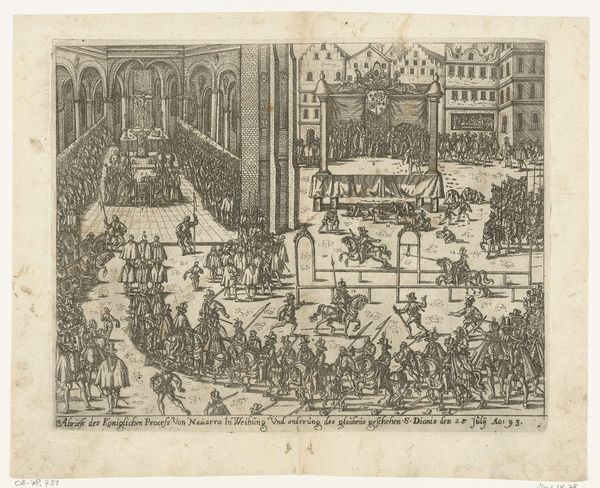
print, engraving
#
baroque
#
dutch-golden-age
# print
#
old engraving style
#
landscape
#
cityscape
#
history-painting
#
engraving
Dimensions: height 137 mm, width 158 mm
Copyright: Rijks Museum: Open Domain
Curator: Look at this engaging print titled, "Aftocht van Spanjaarden uit Maastricht, 1577," created sometime between 1613 and 1615 by an anonymous artist. Editor: Immediately, the level of detail impresses me. There is a flurry of activity with that collective evacuation, a city breathes, relieved, in the background, and a quiet terror, no? I mean, look at the figures, the labor in every corner of the frame. Curator: It captures the Spanish retreat from Maastricht with striking precision. The meticulous lines forming this engraving serve the historical narrative, a powerful example of Dutch Golden Age printmaking and Baroque influence, wouldn’t you agree? Editor: Undoubtedly. Though, stepping back, the artist uses line and form here not merely to illustrate but to emphasize a certain… class anxiety? Look at the burdened porters; their struggle is nearly as central as the departing army itself. Are they leaving, or just carrying the luggage? Curator: Precisely, this is where I think about its place among landscapes and history paintings. There's a documentarian’s urge to record and an artist's yearning to give the history emotion, and meaning. Editor: It's craft used to deliver not just information, but an ideological perspective, too. What we see is very much made, a deliberate construction born of the tools used and the hand wielding them. I imagine how many prints were made and consumed? Who handled the inks and prepared the paper? It certainly wasn't any nobility. Curator: Good point. The engraving itself is also of significance; it democratized the scene, if you will. More accessible than painting, engravings spread ideas efficiently. Editor: And the skill is astonishing – to create depth, emotion, and social commentary using such a limited palette. It transforms something heavy into something very evocative and accessible. Curator: Ultimately, I think the image’s complexity leaves us pondering how to create, copy, and deliver, in times of turmoil and recovery. Editor: An apt observation. I am also now wondering about labor beyond the picture. From production, from consumption, so that it lives today.
Comments
No comments
Be the first to comment and join the conversation on the ultimate creative platform.

